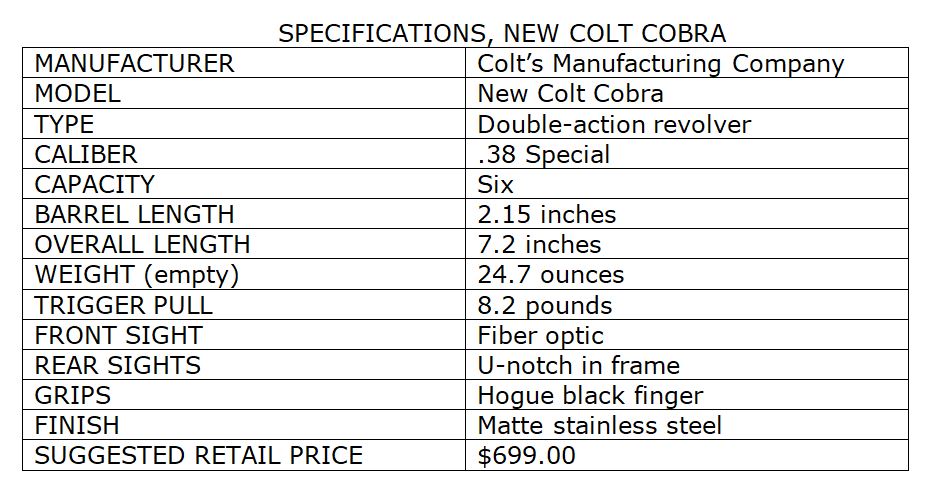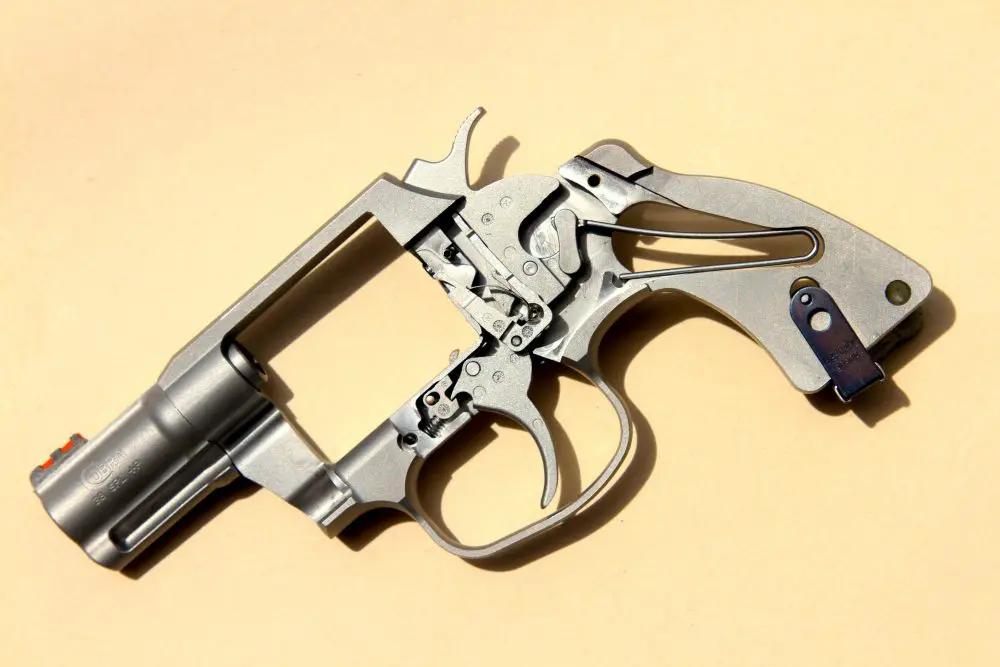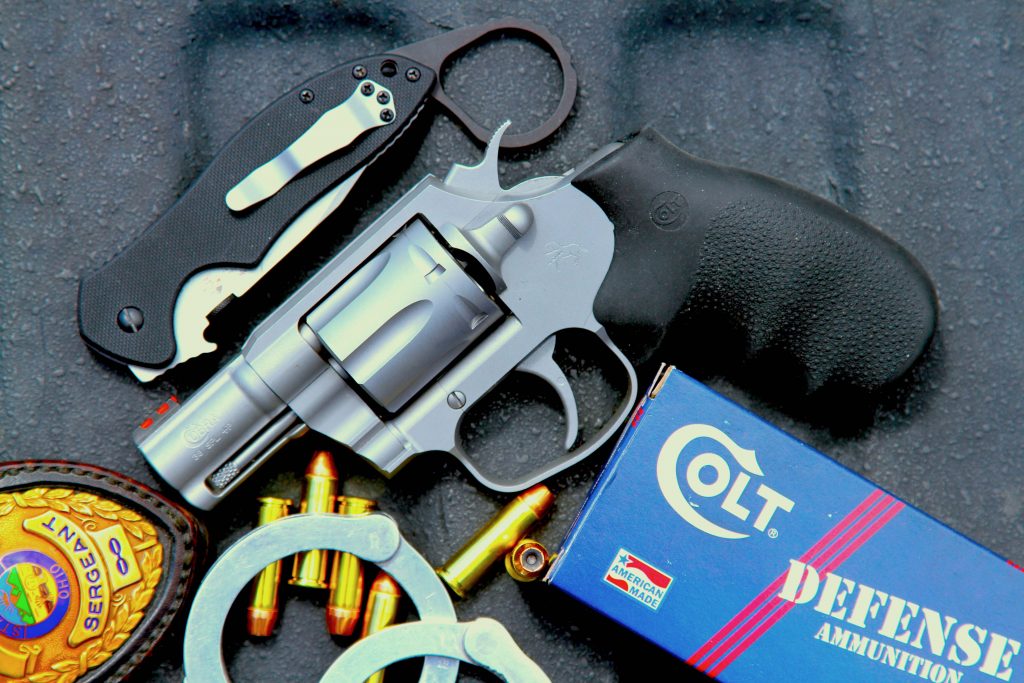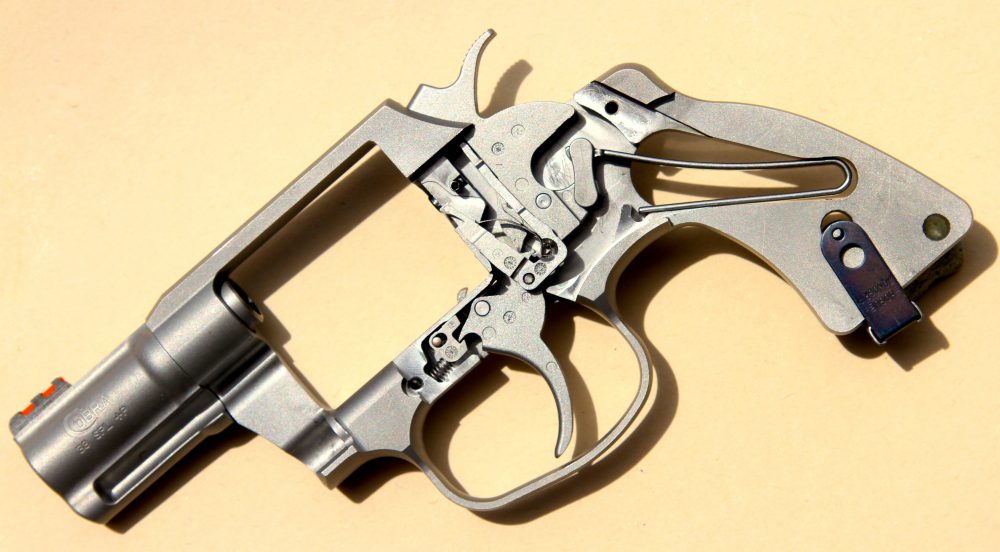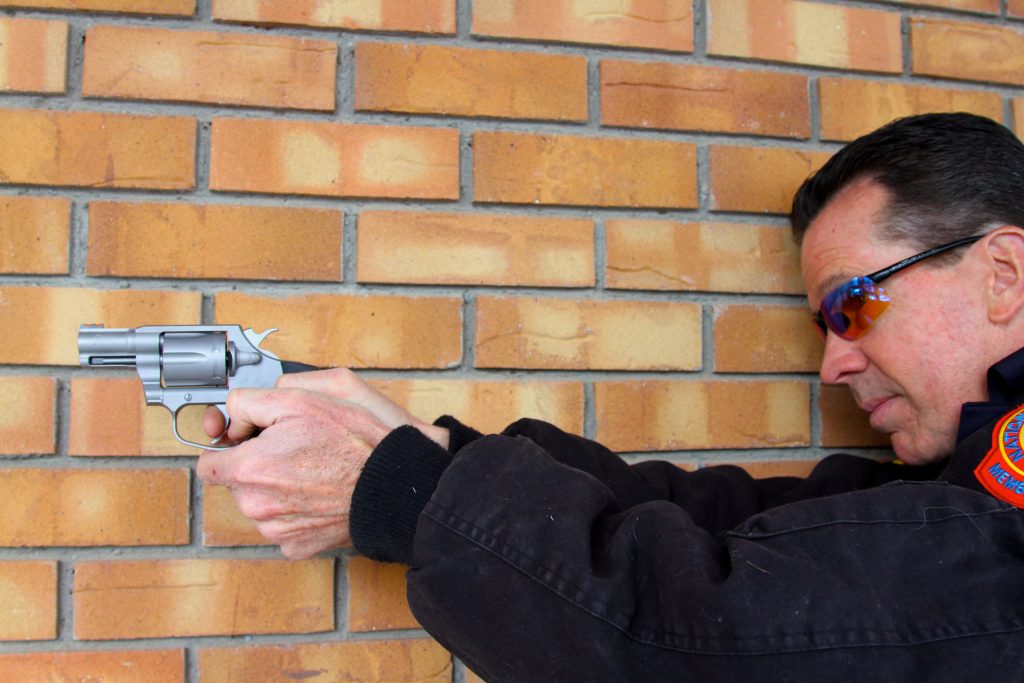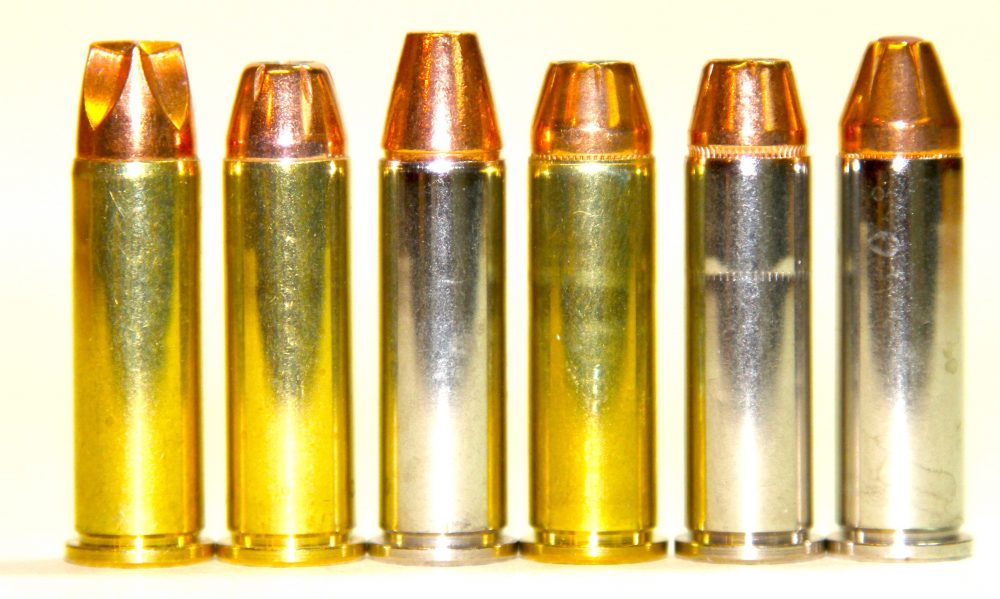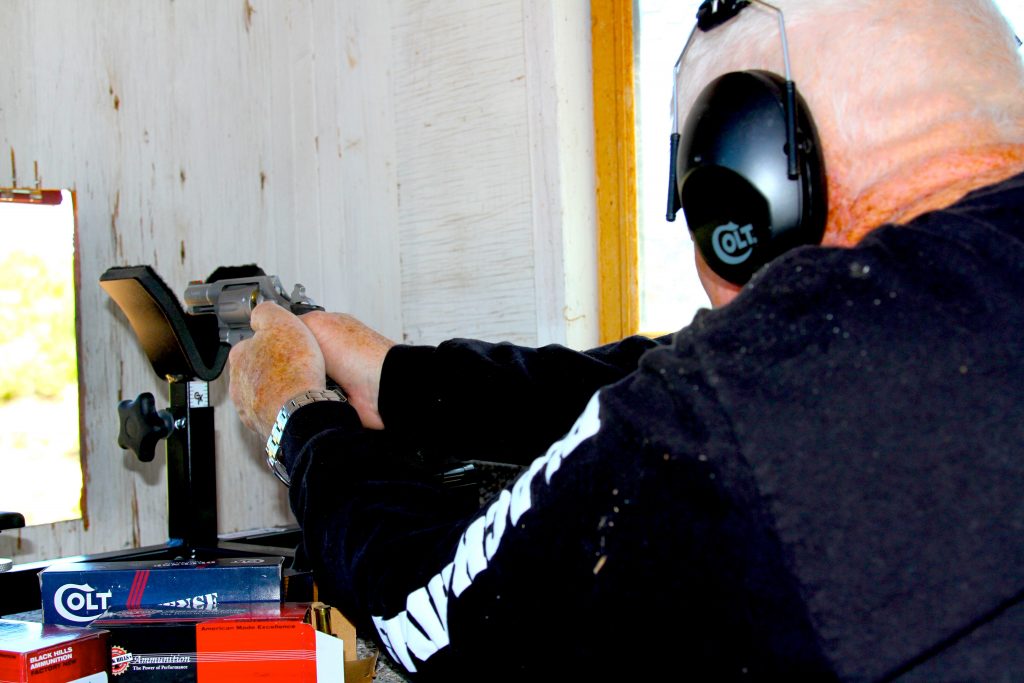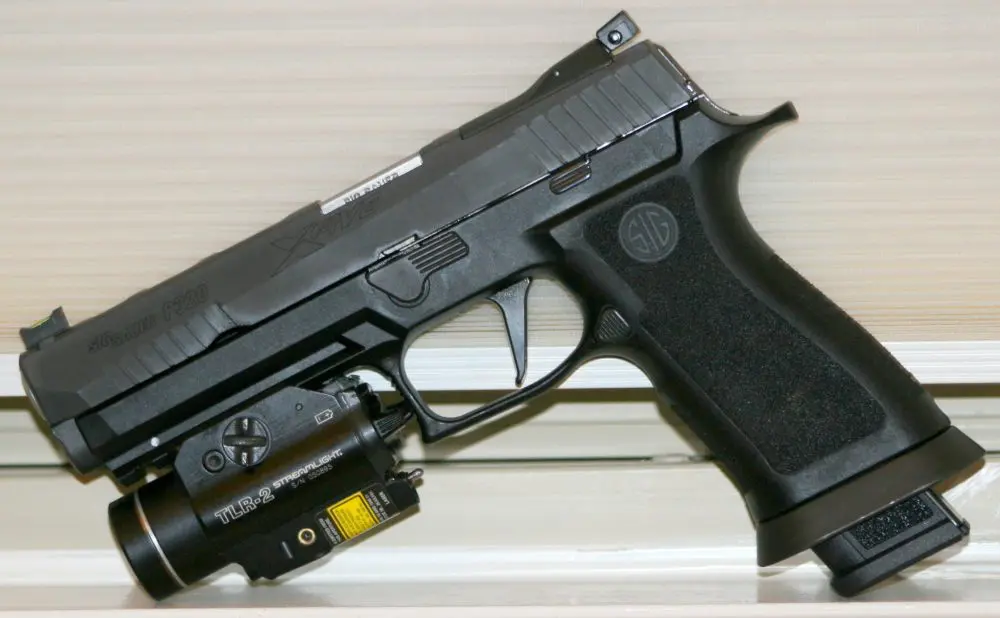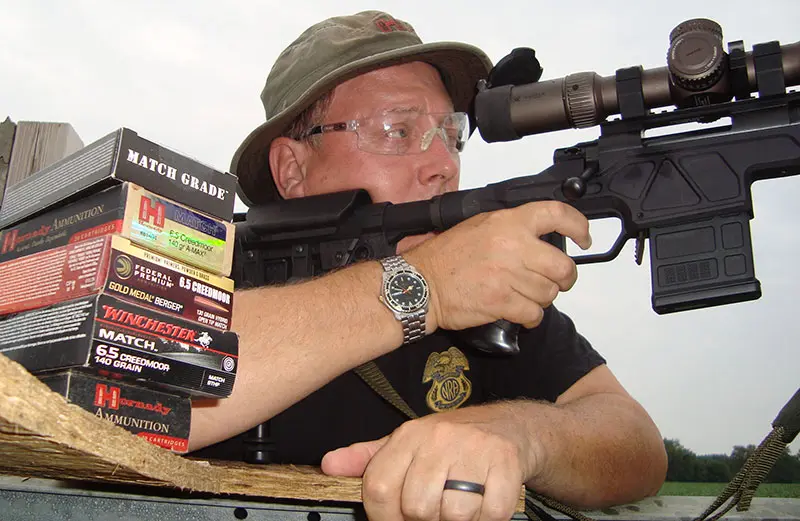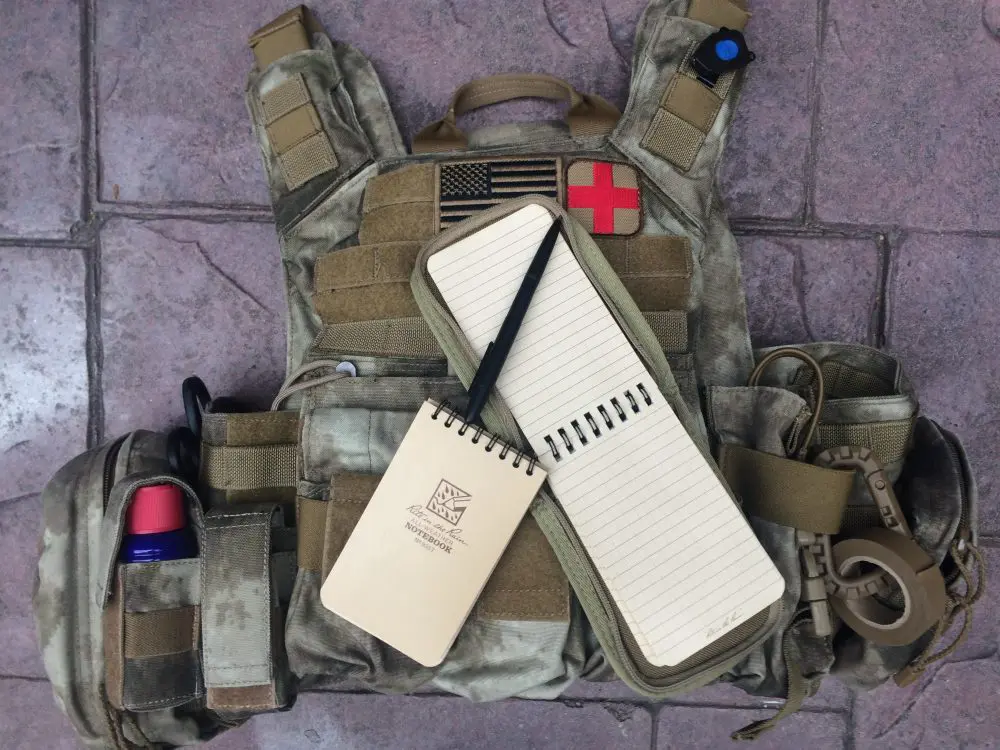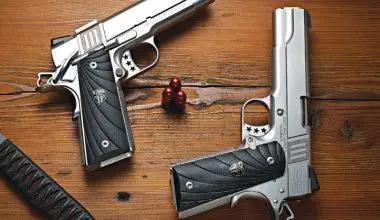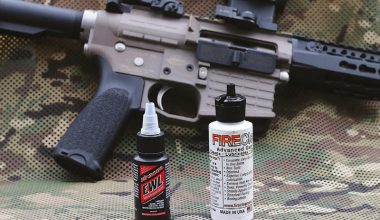First appearing in 1950, the Colt Cobra amounted to a lightweight version of the Colt Detective Special revolver, which was introduced in 1927.
Where the all-steel Detective Special weighed 21 ounces, the Cobra tipped the scales at six ounces less, due to the aircraft-quality aluminum alloy of which its frame was made. The two revolvers were otherwise mechanically identical and chambered mainly in .38 Special.
With the increasing interest in self-loading pistols, the Colt Cobra was discontinued in 1981, with the Detective Special production ending in 1995. Now, 21 years later, with a pendulum swing back to wheelguns, you could say that Colt has resurrected both guns in one.
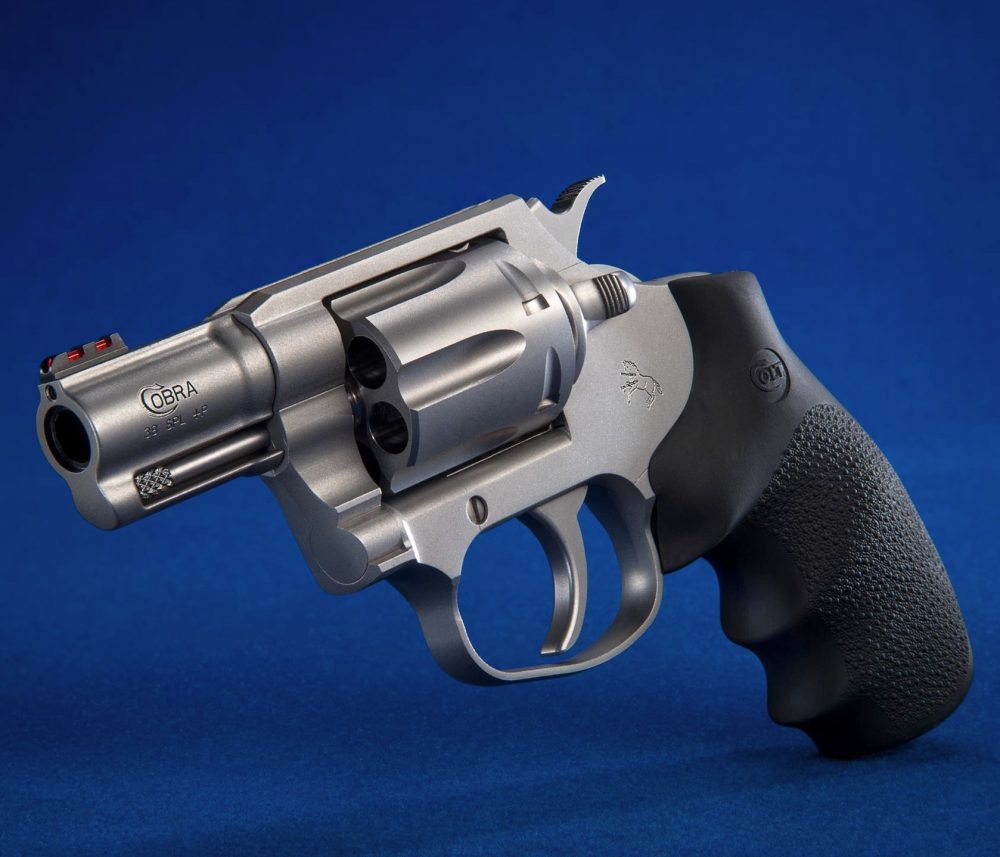
Table of Contents
THE NEW COBRA
Once again called the Cobra, the new gun is all steel like the Detective Special, but this time it’s matte stainless steel. It is also superior to its ancestors inside and out. Chambered only in .38 Special, it is also rated for +P ammunition.
The glowing red fiber-optic front sight sits on a top rib and, after unloading the gun, is replaceable by removing a small hex bolt above the muzzle.
Not leaving the ejector rod exposed to damage, an integral housing protects it and, along with the wrap-around flange and laser-engraved Colt logo on both sides of the barrel, adds to the Cobra’s attractive appearance.
A deep .190-inch square sight track on the top strap narrows to .137 inch at the back to provide the fixed rear sight, followed by a nicely sculpted hammer with grooved spur.
The steel then disappears under a one-piece rubber Hogue grip also bearing the Colt logo, with three finger grooves and a spacer behind the trigger guard. This excellent grip fits my hand perfectly and brings the gun up with the front sight only a tad high.
The new trigger guard is oblong and glove friendly, and there is no way the trigger can pinch my finger! The face of the trigger is also smooth for double-action shooting, which is primarily what the Cobra was intended for, but more on that below.
With its anti-recoil design, the cylinder release is typical Colt and has excellent purchase for instant access even under stress. When the cylinder release is pulled back with the right thumb (left handers have to change hands to do this), the six-shot cylinder can be swung out to the left for inspection, to load or unload.
Yes, this snub-nosed pocket jewel is a “six shooter” and is always loaded that way.
A close look reveals that the cylinder stops are machined off-center at each chamber (a Colt trait), which preserves strength in that area compared to some other makes. The long approaches to the stops also ensure that the cylinder will not bypass chambers when firing quickly under stress.
Additionally, when the trigger is pulled all the way back and the hammer falls, the cylinder is locked totally tight in position, a feature that enhances accuracy. The cylinder gap is a hair under .0005 inch.
The side plate is essentially the same as on the original Colt Cobra and is fit just about to perfection, as is the crane. Unscrew the retainer on the right front of the frame just enough to allow the crane and cylinder to be removed for cleaning.
On the left side plate is the Rampant Colt laser engraved and on the right side are the serial number and a computer identification code.
The new Colt Cobra differs from its ancestors in that it has a frame-mounted firing pin, and it is also equipped with a safety transfer bar. The new Cobra’s double-action trigger is far and away superior to any other issue Colt DA revolver I’ve ever fired.
Firing single-action, this gun’s trigger let-off is crisp with zero creep and measures a tad under four pounds.
OPERATION
In double-action (DA) shooting, the action is that of the trigger, which both prepares (cocks) the hammer to fire and then releases it to go forward all in one “smooth pull.” In single-action firing, the support thumb cocks the hammer. The gun is then fired by “pressing” the trigger.
We continue to hear about “staging” the trigger by slowly “pulling” it back almost all the way while aligning the sights and then “pressing” it the final distance to fire.
This amounts to a substitution for single-action firing. It has no place in a gunfight and is negative training. Practicing the uninterrupted smooth-pull DA will allow you to become proficient with it, but there’s more.
Different about the new Cobra’s double-action operation is a new angular relation of the parts involved. Early Colt Cobra (and other) triggers had a horizontal plane at the rear that raised the strut to work the hammer, and this resulted in “stacking,” and often a scraping feeling, especially when new.
The new design brings a Swiss-watch-quality DA pull throughout the sequence.
It is surprising to see how many new revolver shooters want to cock the hammer with their strong thumb, disturbing their grip in the process and losing time, and gripping the gun like they do a semi-auto pistol with the support hand out in front. This puts their support thumb dangerously close to the cylinder gap, where white-hot gas vents at around 10,000 psi!
The correct method is to bring the strong thumb down on the side with the support thumb crossed over it, and let only that thumb do the cocking when shooting single-action. On seeing this, one such shooter observed, “Oh, like the cowboy shooters do.” Uh, yep!
Lastly are several methods of ejecting empty casings from a swing-out cylinder revolver, many of which involve holding the gun horizontal while pushing back the ejector rod. This method can allow casings to remain in the cylinder and to get caught under the ejector star as it returns forward, creating a bad malfunction.
Salt Lake City Police Detective and former Gunsite instructor Kyle Jones demonstrated a better ejection method by grasping the open cylinder with the left hand while holding the gun vertical and coming down hard on the ejector rod with the right palm. This method uses gravity to help get rid of the empty cases along with any unburned power getting under the ejector star, which can also create a malfunction.
SHOOTING THE COBRA
Having put some 200 rounds of Colt .38 Special ammunition through a couple of prototype Colt Cobras in December 2016 at Gunsite, where the gun was first introduced, I was no stranger to the gun.
Yes, I said Colt Ammunition, which is now made by Double Tap Ammunition with the Colt logo on the box. I also tested my new sample Cobra with Colt and several other brands of .38 Special here, including Black Hills, Cor®Bon, Federal, Hornady, and Winchester.
While all ammunition tested performed perfectly, my interest was with one of the two .38 Special loads I had received samples of from Black Hills: their new Honey Badger round. As different from all other .38 Special ammo as the ferocious honey badger is from all other animals, this round gets its name from its solid copper alloy bullet with a cross nose and four deep parabolic indentations. Photos and videos I’ve seen of ballistic gelatin tests of the Honey Badger rounds have been impressive.
The new Cobra performed flawlessly throughout with zero issues, especially its glass-smooth double-action. Using a CTK Precision P3 rest, I was able to produce 25-yard six-shot groups of from three to five inches with ease single-action and about 12 inches shooting double-action standing modified Weaver. Six-shot groups are important to check all six chambers for accuracy.
DRUTHERS
The end of the Cobra’s ejector rod is knurled and flat, and very apparent when quickly ejecting empties, especially when practicing. I would prefer that the end be plain and slightly radiused or covered with a small plastic “cup” to save skin. I would also prefer a wider rear sight notch to get on target faster and stay there.
The small-frame revolver market has been making a booming comeback over the last several years. The new Colt Cobra is a welcome addition.
To see how the Black Hills Honey Badger mentioned in the article performed in ballistic gelation see https://www.swatmag.co/video/ballistic-gelatin-015240/.
SOURCES
COLT’S MANUFACTURING COMPANY LLC
(800) 962-2658
www.coltsmfg.com
BLACK HILLS AMMUNITION
(605) 348-5150
www.black-hills.com
COLT DEFENSE AMMUNITION
(866) 357-1066
www.doubletapammo.com
COR®BON
(800) 626-7266
www.corbon.com
CTK Precision
(715) 754-2891
www.ctkprecision.com
DEFENSE SAFETY RING
www.oneasteriskindustries.com
FEDERAL PREMIUM AMMUNITION
(800) 379-1732
www.federalpremium.com
HORNADY MFG. CO.
(800) 338-3220
www.hornady.com
WINCHESTER AMMUNITION
(615) 258-3340
www.winchester.com
